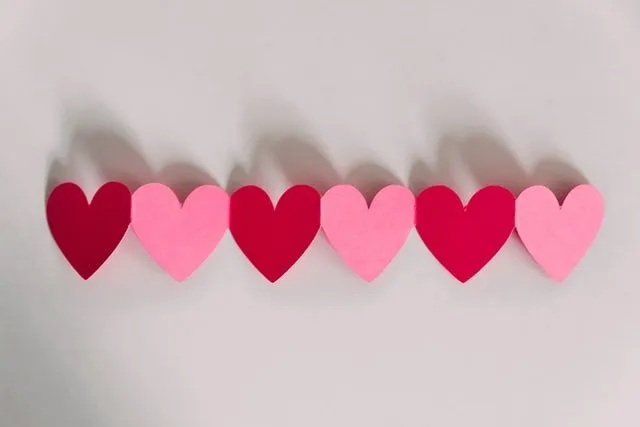
Translation Industry During Quarantine
Impacts of the quarantine on the translation industry. How translator's life has changed and what are the most popular translation industries during the epidemic.

Love is a universal feeling but the phrase “I love you” in different languages can sound drastically different. People are not very likely to declare their affection every day. However, on the most romantic day of the year – St. Valentine’s Day celebrated on 14th February the words of tenderness can be heard at every corner. Recently this holiday has gained huge popularity globally and heart-shaped cards on this day are sold in most countries. If you would like to sign your card in an unusual but romantic way, just write “I love you” in a different language.
On St. Valentine’s day, people often want to make their loved ones feel special to them. There is a very romantic way in which it is possible to achieve it – to declare endearment in a different language. Even if one’s foreign language skills are not proficient enough to pronounce the phrase correctly, it is possible to sign a heart-shaped card in a different tongue. Learn how to write “I love you” in different languages and impress your Valentine. Below, find the list of translations of this phase into 50 tongues from all over the world completed by TheWordPoint linguists.
Here is the list of the phases to declare one’s feelings in 50 different languages used across all the continents:
Albanian: Te dua
Arabic: Ana uhibbuka
Basque: Maite zaitut
Bengali: Ami tomake bhalobashi
Bulgarian: Obicam te
Catalan: T’estimo
Chinese (Mandarin): Wo ai ni
Croatian translation: Volim te
Czech: Miluji tě
Danish: Jeg elsker dig
Dutch: Ik hou van jou
Estonian: Ma armastan sind
Finnish: Mina rakastan sinua
French: Je t'aime
Frisian: Ik hâld fan dy
German: Ich liebe dich
Greek: S'agapo
Hawaiian: Aloha wau ia 'oe
Hebrew: Ani ohev otach
Hindi: Main tumse pyar karta/i hoon
Hungarian translation: Szeretlek
Icelandic: Ég elska þig
Indonesian: Saya cinta kamu
Irish: Gráim thú
Italian: Ti amo
Japanese: Aishiteru
Korean: Sarang hae
Latvian: Es tevi milu
Macedonian: Te sakam
Maltese: Inhobbok
Norwegian: Jeg elsker deg
Persian: Duset daram
Polish: Kocham cie
Portuguese: Eu te amo
Punjabi: Maiṁ tuhānū pi'āra karadā hāṁ
Romanian-Te lubesc
Russian: Ya tebya lyublyu
Samoan: Oute alofa ia oe
Slovak: Lubim ta
Spanish: Te amo
Swahili: Naku penda
Swedish: Jag älskar dig
Thai: Phom rak khun
Turkish: Seni seviyorum
Ukrainian: Ya tebe kohayu
Vietnamese: Tôi mến bạn
Welsh: Rwy’n dy garu di
Yiddish: Ikh hab dir lib
Yoruba: Mo nifẹ rẹ
Zulu: Ngiyakuthanda
Find out more: professional Hebrew translation services for every possible industry.
For those who find this list not enough for declaring their sentimental words, there are some more rather unusual options. Here is translation of “I love you” in different languages that are artificial. Some of them were created for universal communication or were specifically designed for books and movies:
Esperanto: Mi amas vin
Klingon (Star Trek): qamuSHa’
Elvish Sindarin (Lord of the Rings): Gi melin
Dothraki (Game of Thrones): Anha zhilak yera norethaan
Valyrian (GOT): Avy jorrāelan
Huttese (Star Wars): Uma ji muna
So, there is plenty to choose from. No matter what language a person uses for saying “I love you” love in different languages means the same. Your beloved one will surely understand that you are declaring your heart feelings in any of the real or artificial tongues as long as you do it from your heart.
The best way is to tell your beloved ones how you feel about them as often as possible. However, there are some special occasions such as St. Valentine’s Day to help people express their true feelings towards others.
This holiday was established in Medieval times to honor Saint Valentine, who, as claimed by different sources, might be one or two Christian martyrs. Sometime later, this holiday started being associated with romance because of several legends. Nowadays it is widely celebrated as the day of love. On this day one can often find the phrase “I love you” in different languages written in shops and malls. There are also many theme parties organized on this day. Heart-shaped cards sometimes called “valentines”, flowers, and chocolate are among the most popular gifts to beloved on this day.
Expressing one’s feelings is often a very delicate topic. This may not always be easy to say those important three words even to someone very dear. A good idea would be to say “you are my love” in other languages when:
You want your crush to feel special
By declaring your love in another language you can emphasize how big and pure your affection is.
Feeling too shy
If you cannot even imagine saying these three words to the person, saying them in another language might help to build some confidence (just like in one of popular songs by Rihanna)
You want to express feelings in some unusual way
Do not worry that your beloved will not understand. Phrase “I love you” in every language may sound different but it has a certain vibe recognized on emotional level. Whatever tongue picked, it will be perceived as some sweet and original way to declare love.
If translations are not your cup of tea, our personal translation services may come in handy. We have best translators with years of experience in the field. They will help with translation of personal documents, letters, poems, email translations, etc. We help people connect despite distance, different cultures, and tongues they speak. Request assistance from most confidential and accurate services on the market.
In fact, one might not always need words to show how he/she feels about someone. There are many elegant ways to say “I love you” in different languages. One of them is Sign language – a language specifically designed for the communication of deaf people. It is actually one of the sweetest ways to show one’s feelings. To say “I love you” in American Sign language, follow these steps:
Lift your hand
Spread fingers wide
Bend your middle and ring fingers down
It might require a little practice but in this way, you can express your feelings to someone across the room. Just look at this person and make gestures speak for you.
Read also: Choose a professional SDS translation service.
Love is always the most universal language. Localization company TheWordPoint wishes a happy St. Valentine’s Day to everyone! Be warm and safe on this very special day and celebrate it with the dear ones. Let your love speak from your heart and we will be happy to translate it for you into any language!

Impacts of the quarantine on the translation industry. How translator's life has changed and what are the most popular translation industries during the epidemic.

How to say Merry Christmas in different languages? It’s time to start writing Christmas cards to your foreign friends. This article will teach you how to say and write Merry Christmas in 50 different languages.

Racism is the term we frequently hear and use but barely ever mull over. It is commonly defined as a belief that one race is superior to another. However, it may not be very precise.
Your personal account was created successfully. Login details were sent to your email.
Thank you for choosing our service!
You have registered your account successfully!
Your application was sent to our
HR Departament.
Get prepared to pass several proficiency tests to prove your skills as we hire only the best experts to deliver the best quality to our Clients. We will contact you soon for futher instructions